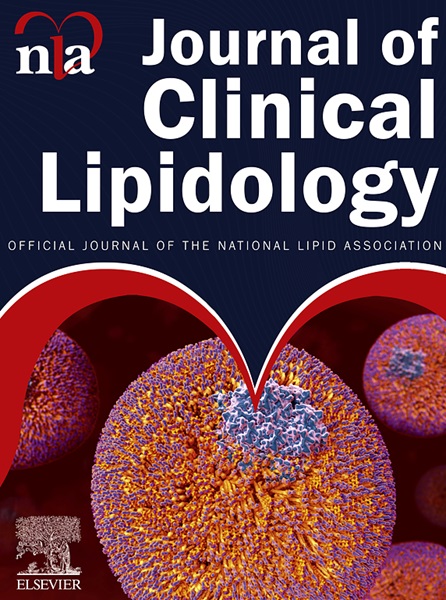降脂药与肠道微生物群的关系:孟德尔随机研究
IF 3.6
3区 医学
Q2 PHARMACOLOGY & PHARMACY
引用次数: 0
摘要
背景肠道微生物群会受到脂质代谢的影响。我们旨在通过药物靶点孟德尔随机化(MR)调查来评估降脂药物(如 9 型丙蛋白转换酶枯草酶/kexin (PCSK9) 抑制剂、Niemann-Pick C1-Like 1 蛋白 (NPC1L1) 抑制剂和 3-hydroxy-3-methylglutaryl-CoA reductase (HMGCR) 抑制剂)对肠道微生物群的影响。方法我们使用在全基因组关联研究中与低密度脂蛋白胆固醇(LDL-C)相关的、位于药物靶基因内或附近的基因变异作为降脂药物暴露的替代物。此外,药物靶基因中的表达性状位点也被用作补充遗传工具。我们使用反方差加权MR(IVW-MR)和基于汇总数据的MR(SMR)计算效应估计值。结果降脂药物的遗传替代物广泛影响了肠道微生物群的丰度。NPC1L1 的高表达与 Eggerthella 属的增加显著相关(β = 1.357,SE = 0.337,P = 5.615 × 10-5)。HMGCR 介导的低密度脂蛋白胆固醇增加与巴斯德菌目(β = 0.489,SE = 0.123,P = 6.955 × 10-5)和嗜血杆菌属(β = 0.491,SE = 0.125,P = 8.379 × 10-5),而 PCSK9 介导的低密度脂蛋白胆固醇升高与嗜血杆菌属相关(β = 0.666,SE = 0.127,P = 1.649 × 10-5)。结论该药物靶标 MR 强调了降脂药物对肠道微生物群的潜在干预效应,并分别揭示了不同类型的降脂药物对特定肠道微生物群的可能影响。本文章由计算机程序翻译,如有差异,请以英文原文为准。
Association of lipid-lowering drugs with gut microbiota: A Mendelian randomization study
BACKGROUND
The gut microbiota can be influenced by lipid metabolism. We aimed to evaluate the impact of lipid-lowering medications, such as proprotein convertase subtilisin/kexin type 9 (PCSK9) inhibitors, Niemann-Pick C1-Like 1 protein (NPC1L1) inhibitors, and 3-hydroxy-3-methylglutaryl-CoA reductase (HMGCR) inhibitors, on gut microbiota through drug target Mendelian randomization (MR) investigation.
METHODS
We used genetic variants that were associated with low-density lipoprotein cholesterol (LDL-C) in genome-wide association studies and located within or near drug target genes as proxies for lipid-lowering drug exposure. In addition, expression trait loci in drug target genes were used as complementary genetic tools. We used effect estimates calculated using inverse variance weighted MR (IVW-MR) and summary data-based MR (SMR). Multiple sensitivity analyses were performed.
RESULTS
Genetic proxies for lipid-lowering drugs broadly affected the abundance of gut microbiota. High expression of NPC1L1 was significantly associated with an increase in the genus Eggerthella (β = 1.357, SE = 0.337, P = 5.615 × 10−5). An HMGCR-mediated increase in LDL-C was significantly associated with the order Pasteurellales (β = 0.489, SE = 0.123, P = 6.955 × 10−5) and the genus Haemophilus (β = 0.491, SE = 0.125, P = 8.379 × 10−5), whereas a PCSK9-mediated increase in LDL-C was associated with the genus Terrisporobacter (β = 0.666, SE = 0.127, P = 1.649 × 10−5). No pleiotropy was detected.
CONCLUSIONS
This drug target MR highlighted the potential interventional effects of lipid-lowering drugs on the gut microbiota and separately revealed the possible effects of different types of lipid-lowering drugs on specific gut microbiota.
求助全文
通过发布文献求助,成功后即可免费获取论文全文。
去求助
来源期刊
CiteScore
7.00
自引率
6.80%
发文量
209
审稿时长
49 days
期刊介绍:
Because the scope of clinical lipidology is broad, the topics addressed by the Journal are equally diverse. Typical articles explore lipidology as it is practiced in the treatment setting, recent developments in pharmacological research, reports of treatment and trials, case studies, the impact of lifestyle modification, and similar academic material of interest to the practitioner.
Sections of Journal of clinical lipidology will address pioneering studies and the clinicians who conduct them, case studies, ethical standards and conduct, professional guidance such as ATP and NCEP, editorial commentary, letters from readers, National Lipid Association (NLA) news and upcoming event information, as well as abstracts from the NLA annual scientific sessions and the scientific forums held by its chapters, when appropriate.

 求助内容:
求助内容: 应助结果提醒方式:
应助结果提醒方式:


